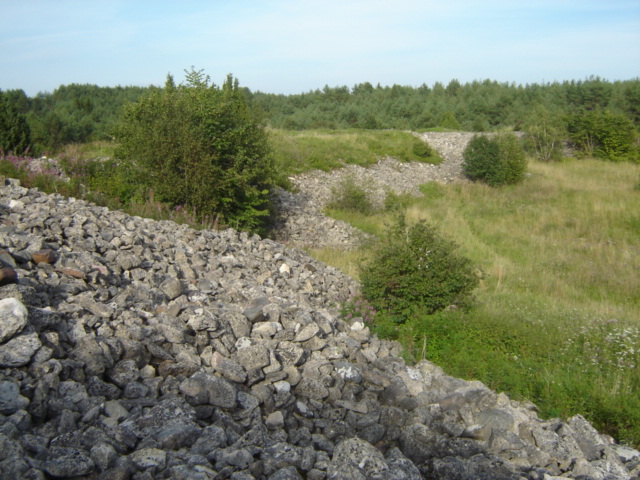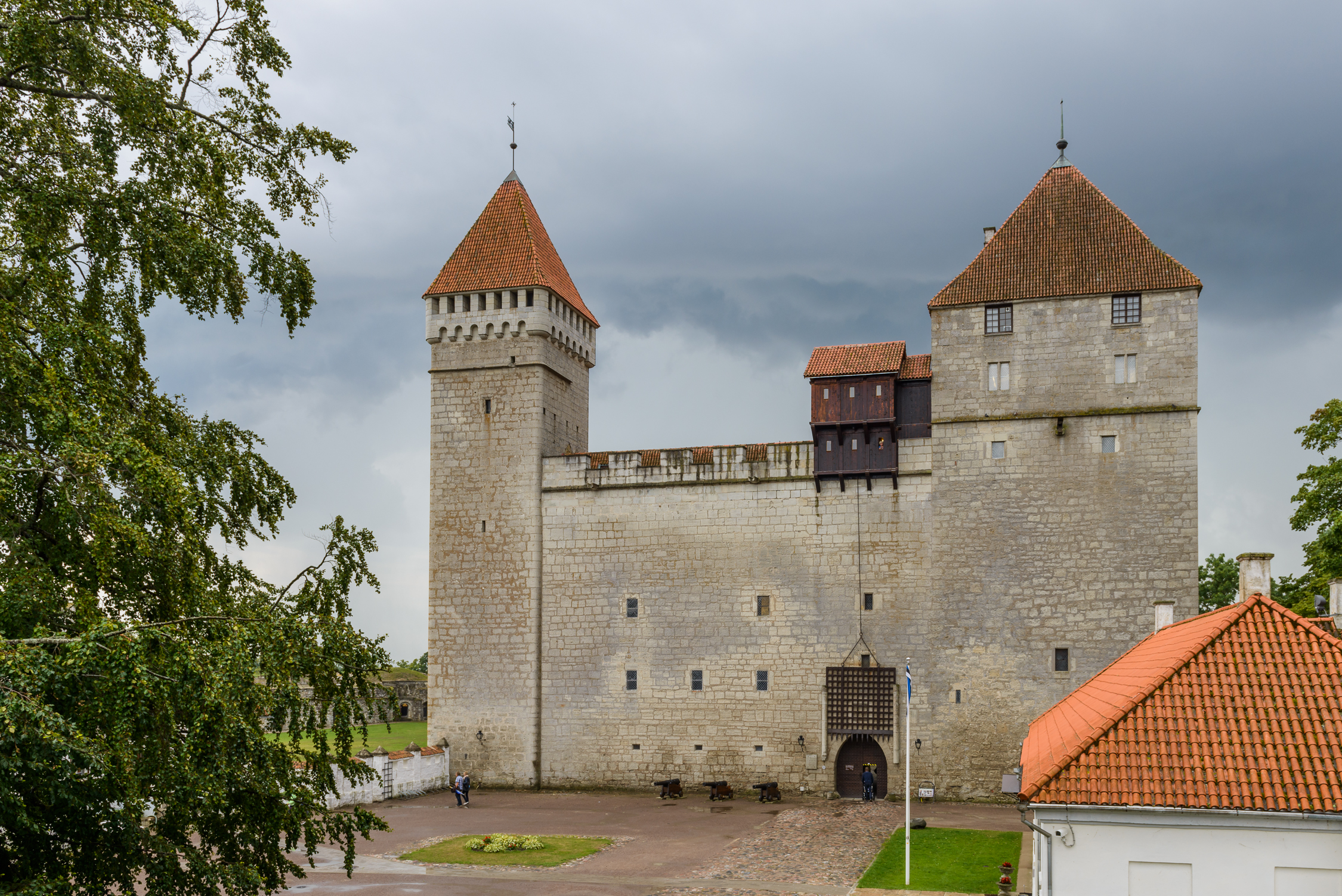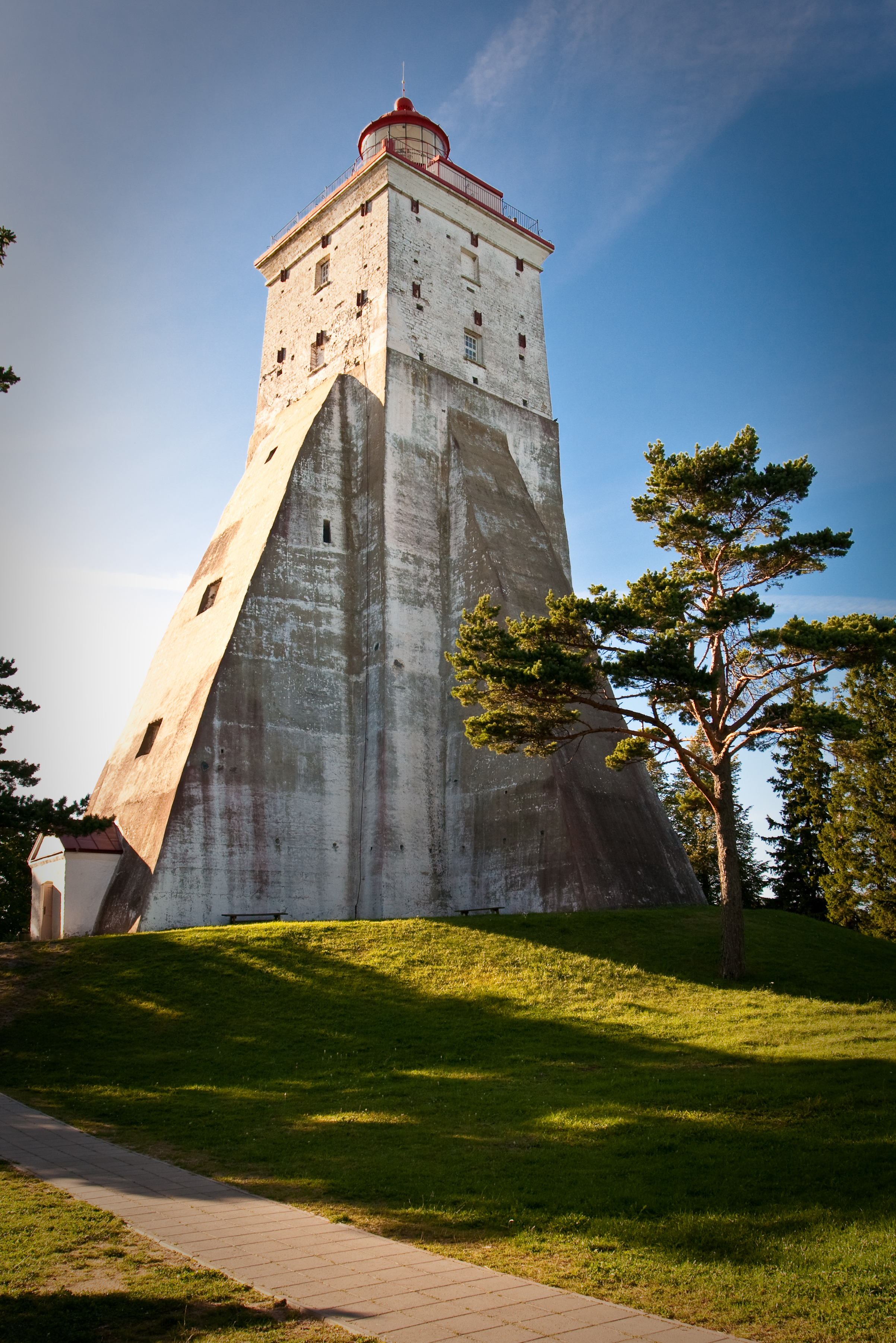|
Saaremaa
Saaremaa is the largest island in Estonia, measuring . The main island of Saare County, it is located in the Baltic Sea, south of Hiiumaa island and west of Muhu island, and belongs to the West Estonian Archipelago. The capital of the island is Kuressaare, which in January 2018 had 13,276 inhabitants. The whole island had a recorded population in January 2020 of 31,435. Etymology In old Scandinavian sources, Saaremaa is called ''Eysysla'' and in the Icelandic Sagas ''Eysýsla'' (Old Norse: ), meaning "the district (land) of island". The island is called ''Saaremaa'' in Estonian, and in Finnish ''Saarenmaa''—literally "isle land" or "island land",Toomse, Liine. "10 Estonian Islands You Should Visit." http://www.traveller.ee/blog/tallinn/10-estonian-islands-you-should-visit. Retrieved 8 March 2016. i.e. the same as the Scandinavian name for the island. The old Scandinavian name is also the origin of the island's name in Danish ''Øsel'', German and Swedish ''Ösel'', ... [...More Info...] [...Related Items...] OR: [Wikipedia] [Google] [Baidu] |
Salme Ships
The Salme ships are two clinker-built ships of Scandinavian origin discovered in 2008 and 2010 near the village of Salme on the island of Saaremaa, Estonia. Both ships were used for ship burials here around AD 700–750 in the Nordic Iron Age and contained the remains of 41 warriors killed in battle, as well as 6 dogs, 2 hunting hawks and numerous weapons and other artifacts. Discovery and excavation The first ship was discovered in 2008 during earth removal for infrastructure construction. An archaeological expedition has been working on the site since 2008. The second ship was discovered in 2010. There is some indirect evidence pointing to the possibility that at least one more ship is yet to be discovered during future excavations. Location The ships were located near the ancient coastline, about above water level. The location is from the present coastline and above present water level. Description Both Salme ships are clinker-built and archaeologists have es ... [...More Info...] [...Related Items...] OR: [Wikipedia] [Google] [Baidu] |
Kuressaare Castle
Kuressaare Castle ( et, Kuressaare linnus; german: Schloss Arensburg), also Kuressaare Episcopal Castle, ( et, Kuressaare piiskopilinnus), is a castle in Kuressaare on Saaremaa island, in western Estonia. History The earliest written record mentioning Kuressaare castle is from the 1380s, when the Teutonic Order began its construction for the bishops of Ösel-Wieck. Some sources claim that the first castle was built of wood. As the inhabitants of Saaremaa put up stiff resistance to foreign efforts to Christianise them, the castle was undoubtedly built as part of a wider effort by the crusaders to gain control over the island. From the outset, it was a stronghold belonging to the bishop of Saare-Lääne (german: Ösel-Wiek) and remained one of the most important castles of the Bishopric until its dissolution during the Livonian War. In 1559, Denmark-Norway seized control over Saaremaa and Kuressaare castle. During this time, the fortifications were modernised. Following the P ... [...More Info...] [...Related Items...] OR: [Wikipedia] [Google] [Baidu] |
Vikings
Vikings ; non, víkingr is the modern name given to seafaring people originally from Scandinavia (present-day Denmark, Norway and Sweden), who from the late 8th to the late 11th centuries raided, pirated, traded and settled throughout parts of Europe.Roesdahl, pp. 9–22. They also voyaged as far as the Mediterranean Sea, Mediterranean, North Africa, Volga Bulgaria, the Middle East, and Greenland, North America. In some of the countries they raided and settled in, this period is popularly known as the Viking Age, and the term "Viking" also commonly includes the inhabitants of the Scandinavian homelands as a collective whole. The Vikings had a profound impact on the Early Middle Ages, early medieval history of Scandinavia, the History of the British Isles, British Isles, France in the Middle Ages, France, Viking Age in Estonia, Estonia, and Kievan Rus'. Expert sailors and navigators aboard their characteristic longships, Vikings established Norse settlem ... [...More Info...] [...Related Items...] OR: [Wikipedia] [Google] [Baidu] |
Kuressaare
Kuressaare () is a town on Saaremaa island in Estonia. It is the administrative centre of Saaremaa Parish and the capital of Saare County. Kuressaare is the westernmost town in Estonia. The recorded population on 1 January 2018 was 13,276. The town is situated on the southern coast of Saaremaa island, facing the Gulf of Riga of the Baltic Sea, and is served by the Kuressaare Airport, Roomassaare harbour, and Kuressaare yacht harbour. Names Kuressaare's historic name Arensburg (from Middle High German ''a(a)r:'' eagle, raptor) renders the Latin denotation ''arx aquilae'' for the city's castle. The fortress and the eagle, tetramorph symbol of Saint John the Evangelist, are also depicted on Kuressaare's coat of arms. The town, which grew around the fortress, was simultaneously known as Arensburg and Kuressaarelinn; the latter name being a combination of ''Kuressaare''—an ancient name of the Saaremaa Island—and ''linn'', which means ''town''.Pospelov, p. 28 A ... [...More Info...] [...Related Items...] OR: [Wikipedia] [Google] [Baidu] |
Thule
Thule ( grc-gre, Θούλη, Thoúlē; la, Thūlē) is the most northerly location mentioned in ancient Greek and Roman literature and cartography. Modern interpretations have included Orkney, Shetland, northern Scotland, the island of Saaremaa (Ösel) in Estonia, and the Norwegian island of Smøla.Andreas Kleineberg, Christian Marx, Eberhard Knobloch und Dieter Lelgemann: ''Germania und die Insel Thule. Die Entschlüsselung von Ptolemaios' "Atlas der Oikumene".'' Wissenschaftliche Buchgesellschaft, Darmstadt 2010. In classical and medieval literature, ''ultima Thule'' (Latin "farthest Thule") acquired a metaphorical meaning of any distant place located beyond the "borders of the known world". By the Late Middle Ages and early modern period, the Greco-Roman Thule was often identified with the real Iceland or Greenland. Sometimes ''Ultima Thule'' was a Latin name for Greenland, when ''Thule'' was used for Iceland. By the late 19th century, however, ''Thule'' was frequently ... [...More Info...] [...Related Items...] OR: [Wikipedia] [Google] [Baidu] |
Hiiumaa
Hiiumaa (, ) is the second largest island in Estonia and is part of the West Estonian archipelago, in the Baltic Sea. It has an area of 989 km2 and is 22 km from the Estonian mainland. Its largest town is Kärdla. It is located within Hiiu County. Names Hiiumaa is the main island of Hiiu County, called or in Estonian. The Swedish and German name of the island is or ('Day' island) and in Danish. In modern Finnish, it is called , literally ' Hiisi's Land'. In Russian it is known as (). In Old Gutnish, it was ('day isthmus'), from which the local North Germanic name is derived. History Prehistory Hiiumaa emerged from the Baltic Sea 8500 years ago due to isostatic uplift after the retreat of the ice cap. Mesolithic settlements are found on the island's Kõpu Peninsula from about 5500 BC. These settlements seem to be related mostly to seal hunting and extend into the earliest Neolithic. As Hiiumaa is constantly uplifting the local sea level was 20 ... [...More Info...] [...Related Items...] OR: [Wikipedia] [Google] [Baidu] |
Muhu
Muhu (also called Muhumaa in Estonian), is an island in the West Estonian archipelago of the Baltic Sea. With an area of it is the third largest island belonging to Estonia, after Saaremaa and Hiiumaa. Together with neighbouring smaller islands of Kesselaid, Viirelaid, Võilaid and Suurlaid it forms Muhu Parish ( et, Muhu vald), the rural municipality within Saare County. The municipality has a population of 1,697 (as of 19 April 2010) and covers an area of . The population density is . History and geography The German names for the island are Mohn and Moon. Moon is also the Swedish name for the island. The most important villages in Muhu are Kuivastu, Liiva (where the school can be found) and Koguva. In Pädaste, an internationally renowned luxury hotel and spa operates in the restored manor house. The island is divided from mainland Estonia by the Suur Strait (''Moonsund'') and from Saaremaa by the Väike Strait. It is linked by ferry to Virtsu in the mainland ... [...More Info...] [...Related Items...] OR: [Wikipedia] [Google] [Baidu] |
Skåneland
Skåneland (Swedish and Danish) or Skånelandene (Danish) is a region on the southern Scandinavian peninsula. It includes the Swedish provinces of Blekinge, Halland, and Scania. The Danish island of Bornholm is traditionally also included.For popular usage, see for example the publication Populärhistoria:Hjälpreda om Skåneland: "Skåneland, d v s Halland, Skåne och Blekinge"Fredsfördraget firas i Altranstädt: "Sverige ingick mot slutet av århundradet i en västeuropeisk allians med Holland och England och kunde därigenom stoppa Danmarks revanschplaner för förlusten av Skåneland"Ett liv fyllt av skandaler "År 1660, då Marie Grubbe anlänt till Köpenhamn, satt Fredrik III på Danmarks tron. Det var han som hade förlorat Skåneland till Sverige vid Roskildefreden 1658". Skåneland has no official recognition or function and the term is not in common usage. Equivalent terms in English and Latin are "the Scanian Provinces" and "Terrae Scaniae" respectively. The term is ... [...More Info...] [...Related Items...] OR: [Wikipedia] [Google] [Baidu] |
Henry Of Livonia
Henry of Latvia ( la, Henricus de Lettis, german: Heinrich von Lettland, lv, Latviešu Indriķis, et, Läti Henrik; 1187 – after 1259), also known in the English-speaking world as Henry of Livonia, was a priest, missionary and historian. He wrote the Livonian Chronicle of Henry which describes the evangelization of the regions which are now part of Estonia and Latvia during the Northern Crusades. Biography The chronicles say that Henry was a Catholic priest who witnessed most of events described. Henry is thought to have been born in 1187 in Magdeburg. Henry was probably German, bearing a German forename and consistently referring to Germans as "we", but it is also possible that he came from Livonia. He had a thoroughly German and Catholic education and as a youth was attached to the household of the Prince-Bishop Albert of Buxhoeveden (c.1165 – 17 January 1229), was ordained a priest in 1208, founded a parish and lived out his life in peace. Henry's ''Chronicles'', com ... [...More Info...] [...Related Items...] OR: [Wikipedia] [Google] [Baidu] |
Sõrve Peninsula
Sõrve is a village in Harku Parish, Harju County in northern Estonia. (retrieved 27 July 2021) It has a population of 197 (as of 1 June 2010). Sõrve was first mentioned in 1241 as ''Serueueræ'' village in the Danish Census Book The Danish Census Book or the Danish book of land taxation ( la, Liber Census Daniæ), ( da, Kong Valdemars Jordebog) dates from the 13th century and consists of a number of separate manuscripts. The original manuscripts are now housed in the Da .... References Villages in Harju County {{Harju-geo-stub ... [...More Info...] [...Related Items...] OR: [Wikipedia] [Google] [Baidu] |
Latvian Language
Latvian ( ), also known as Lettish, is an Eastern Baltic language belonging to the Baltic branch of the Indo-European language family, spoken in the Baltic region. It is the language of Latvians and the official language of Latvia as well as one of the official languages of the European Union. There are about 1.3 million native Latvian speakers in Latvia and 100,000 abroad. Altogether, 2 million, or 80% of the population of Latvia, speak Latvian. Of those, around 1.16 million or 62% of Latvia's population use it as their primary language at home, however excluding the Latgale Region it is spoken as a native language in villages and towns by over 90% of the population. As a Baltic language, Latvian is most closely related to neighboring Lithuanian (as well as Old Prussian, an extinct Baltic language); however Latvian has followed a more rapid development. In addition, there is some disagreement whether Latgalian and Kursenieki, which are mutually intelligible with Latvian ... [...More Info...] [...Related Items...] OR: [Wikipedia] [Google] [Baidu] |
Nordic Iron Age
Iron Age Scandinavia (or Nordic Iron Age) was the Iron Age, as it unfolded in Scandinavia. Beginnings The 6th and 5th centuries BC were a tipping point for exports and imports on the European continent. The ever-increasing conflicts and wars between the central European Celtic tribes and the Mediterranean cultures destabilized old major trade routes and networks between Scandinavia and the Mediterranean, eventually breaking them down. Archaeology attests a rapid and deep change in the Scandinavian culture and way of life due to various reasons which have not yet been sufficiently analyzed. Agricultural production became more intensified, organized around larger settlements and with a much more labour-intensive production. Slaves were introduced and deployed, something uncommon in the Nordic Bronze Age. The rising power, wealth and organization of the central European tribes in the following centuries did not seem to instigate an increased trade and contact between Scandinavia ... [...More Info...] [...Related Items...] OR: [Wikipedia] [Google] [Baidu] |






